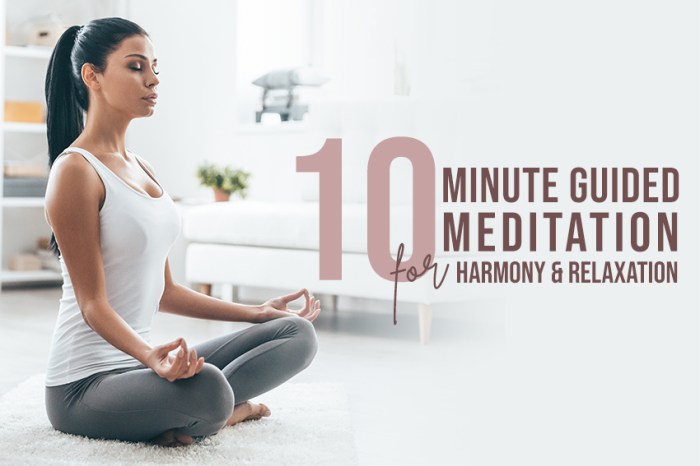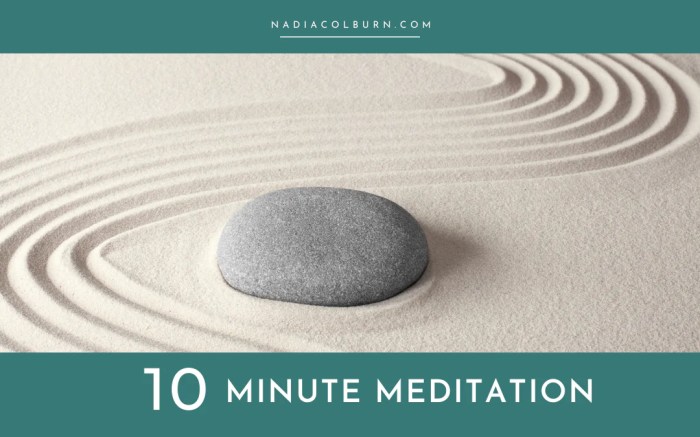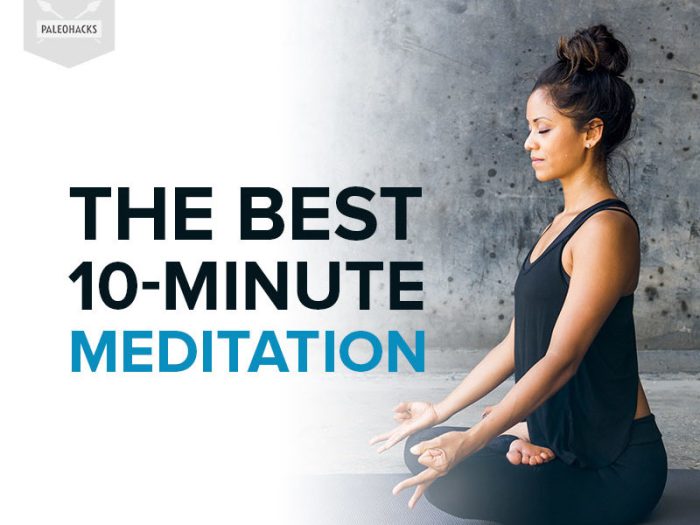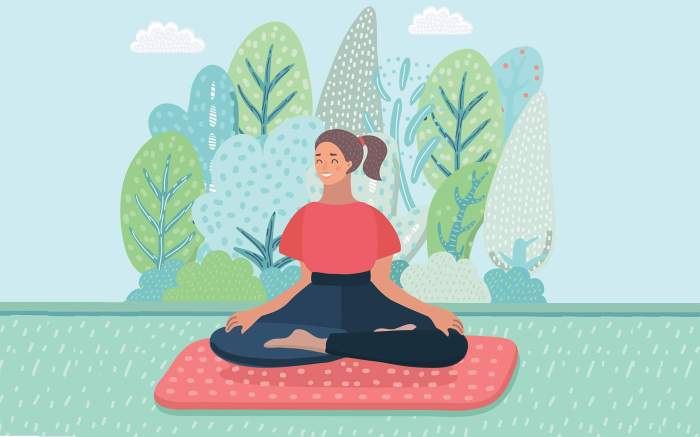Embark on a journey of self-discovery with 10 minute meditation, a powerful tool to enhance focus, reduce stress, and promote overall well-being. Dive into the world of quick mindfulness practices with this comprehensive guide.
Explore various techniques, learn to create a soothing environment, tackle common challenges, and seamlessly integrate short meditative sessions into your daily routine.
Benefits of 10 Minute Meditation

Source: mindfultravelexperiences.com
Practicing a 10-minute meditation session can have numerous mental and physical benefits. It serves as a quick and effective way to calm the mind, reduce stress, and enhance overall well-being.
Improved Focus and Reduced Stress
- Regular short meditation sessions can help improve focus and concentration by allowing individuals to clear their minds of distractions.
- Reducing stress levels through brief meditation can lead to a more relaxed state of mind, which can positively impact productivity and overall mental health.
Enhanced Well-being and Mindfulness
- Engaging in 10-minute meditation practices on a consistent basis can contribute to a greater sense of well-being by promoting relaxation and inner peace.
- Developing mindfulness through short meditation sessions can help individuals become more present and aware of their thoughts, emotions, and surroundings.
Techniques for 10 Minute Meditation

Source: foodmatters.com
When it comes to a quick 10-minute meditation session, there are various techniques you can try to help you relax and center your mind. Each technique has its own unique benefits, so it’s worth experimenting to find what works best for you.
Breathing Exercises
Breathing exercises are a simple yet effective way to practice mindfulness in a short amount of time. Start by finding a comfortable seated position, close your eyes, and focus on your breath. Inhale deeply through your nose, hold for a moment, and then exhale slowly through your mouth. Repeat this process for several minutes, paying attention to the sensation of your breath entering and leaving your body.
Body Scan
A body scan meditation involves focusing on different parts of your body to bring awareness and release tension. Start by sitting or lying down in a comfortable position, then slowly scan your body from head to toe, paying attention to any areas of tightness or discomfort. Take deep breaths as you bring your awareness to each body part, consciously relaxing and letting go of any tension you may be holding.
Guided Visualization
Guided visualization is a technique where you imagine a peaceful scene or scenario to help calm your mind and reduce stress. You can listen to a guided meditation recording or simply create your own visualization by picturing a serene setting in your mind. Focus on the details of this mental image, such as the sounds, smells, and sensations, allowing yourself to fully immerse in the experience.
Creating a Relaxing Environment

Source: nadiacolburn.com
Creating a calming space is essential for a successful 10-minute meditation session. The environment plays a crucial role in helping you relax and focus your mind. Here are some tips on setting up a peaceful atmosphere for your meditation practice.
Comfortable Seating
- Choose a comfortable chair or cushion to sit on during your meditation. Make sure your back is supported, and your posture is upright but relaxed.
- Experiment with different seating options to find what works best for you. Some prefer sitting cross-legged on the floor, while others find a chair more comfortable.
Lighting
- Dim the lights or use soft, natural lighting to create a soothing ambiance. Harsh lighting can be distracting and disrupt your focus.
- Candles or salt lamps can also add a calming effect to the room. Consider incorporating these gentle sources of light into your meditation space.
Minimizing Distractions
- Turn off or silence electronic devices to prevent interruptions during your meditation. Create a technology-free zone to fully immerse yourself in the practice.
- Choose a quiet location where you won’t be disturbed. Inform others in your household about your meditation time to minimize interruptions.
Overcoming Common Challenges
When trying to meditate for just 10 minutes, it is common to face various obstacles that can hinder the practice. These challenges may include distractions, racing thoughts, restlessness, and difficulty in maintaining focus within a short span of time. However, with the right strategies, it is possible to overcome these hurdles and make the most out of your quick meditation session.
Strategies to Overcome Distractions
- Avoid meditating in a noisy environment by finding a quiet and peaceful space.
- Set a timer to ensure you stay on track and minimize the urge to check the time frequently.
- Practice mindfulness by acknowledging distractions without judgment and gently bringing your focus back to your breath or mantra.
- Use earplugs or soothing background music to block out external noise and create a calming atmosphere.
Dealing with Racing Thoughts and Restlessness
- Accept the presence of racing thoughts without getting caught up in them. Let them pass like clouds in the sky.
- Focus on your breath or a specific point of concentration to anchor your mind and prevent it from wandering.
- Engage in gentle movements or stretches before meditation to release physical tension and prepare your body for stillness.
- Consider incorporating guided meditation sessions that provide verbal cues to help you stay focused and relaxed.
Integrating 10 Minute Meditation into Daily Routine

Source: paleohacks.com
Adding a 10-minute meditation practice to your daily routine can have numerous benefits for your overall well-being. Here are some tips on how to seamlessly incorporate meditation into your day.
Best Times to Meditate
Choosing the right time to meditate can help you establish a consistent practice. Consider meditating:
- In the morning: Start your day with a clear mind and set intentions for the day ahead.
- During a break: Take a short meditation break during your workday to refocus and recharge.
- In the evening: Unwind before bed and promote relaxation for a restful night’s sleep.
Making Meditation a Habit
To make meditation a consistent part of your routine, try these strategies:
- Schedule it: Set a specific time each day for your meditation practice to create a habit.
- Start small: Begin with just 10 minutes a day and gradually increase the duration as you become more comfortable.
- Use reminders: Set alarms or notifications to prompt you to meditate at your chosen time.
Staying Motivated
Staying motivated to meditate daily can be challenging, but these tips can help:
- Reflect on the benefits: Remind yourself of how meditation positively impacts your mental and emotional well-being.
- Find accountability: Share your meditation goals with a friend or join a meditation group for support.
- Mix it up: Explore different meditation techniques to keep your practice engaging and enjoyable.
End of Discussion

Source: mindful.org
Elevate your daily life with just 10 minutes of meditation, experiencing a profound shift in mental clarity and inner peace. Embrace the transformative power of mindfulness as you embark on this enriching path towards holistic wellness.